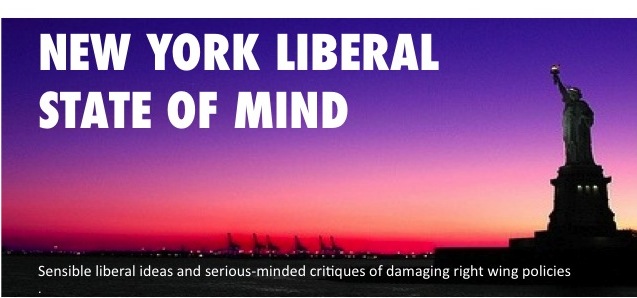 Today David Brooks in the New York Times has written a spurious, inaccurate column (link to it here) about America's power elite in which he feebly tries to explain the angry disaffection abroad in the land.
Today David Brooks in the New York Times has written a spurious, inaccurate column (link to it here) about America's power elite in which he feebly tries to explain the angry disaffection abroad in the land.Among the dim-witted statements he has made (and quick commentary following them) are:
- "As we’ve made our institutions more meritocratic, their public standing has plummeted." Meritocracy, indeed. In fact, for instance, the U.S. Senate has one African-American, one Asian-American, one Hispanic member, and 16 women. There are 4 African-Americans heading Fortune 500 Companies, only one woman among them. The first black Fortune 500 CEO was only appointed in 1999: Franklin Raines of Fannie Mae. The Executive Leadership Council, a group in Alexandria, Virginia, notes that the percentage of Fortune 500 CEO seats occupied by white males, stayed steady in 2009 at 73%.
- "It could be that Americans actually feel less connected to their leadership class now than they did then..." The reason, Mr. Brooks, is not that the rich and powerful grow ever more so, but that the meat-and-potatoes middle and working classes grow steadily less rich and powerful. Until the 1970's, the standard of blue collar "middle-class" was a $20 per hour wage (adjusted to 2010 money). Since then the percentage of people earning at least $20 an hour has eroded in every sector of the economy, falling in 2008 to 16 percent of all hourly workers from 23 percent in 1979 — a gradual unwinding of post-World War II gains. The decline is greatest in manufacturing, where only 1.9 million hourly workers still earn that much, down 60 percent since 1979, according to the Bureau of Labor Statistics. This neatly coincides with the rise of "Free Trade" and helter-skelter immigration policies that have pushed wages down and kept native born African-Americans, among others, from good paying jobs that were traditionally the second rung on the ladder of group success. “The most important model that rolled off the Detroit assembly lines in the 20th century,” said Harley Shaiken, a labor economist at the University of California at Berkeley, “was the middle class for blue-collar workers.”
- "[S]ociety is too transparent... I’d observe that the more government has become transparent, the less people are inclined to trust it." Where does one begin to point out the deficient thinking of such statements? Perhaps with the Bush Administration's manipulation of intelligence that lead to the Iraqi War? Or should we dally in the vale of the meltdown of the banks, of which 99% of Americans were unaware before the hard rains came? Or perhaps we should consider that details of the bailout of the same devious banks are perniciously being kept secret by the Federal Reserve? How about secret renditions, the pressure for closed military trials of terrorists, or even the rules governing chemicals in the food we eat? Democracy argues eternally for MORE, not less transparency, except in time of dire emergency, and I do mean dire.
Finally, the top 1% of Americans controls almost 43% of the wealth in the country. About 17% of our population controls 93% of the wealth. That means that 255 million Americans are splitting the remaining 7% of the wealth. This is a prescription for________________ (fill in your favorite doomsday scenario.)





No comments:
Post a Comment